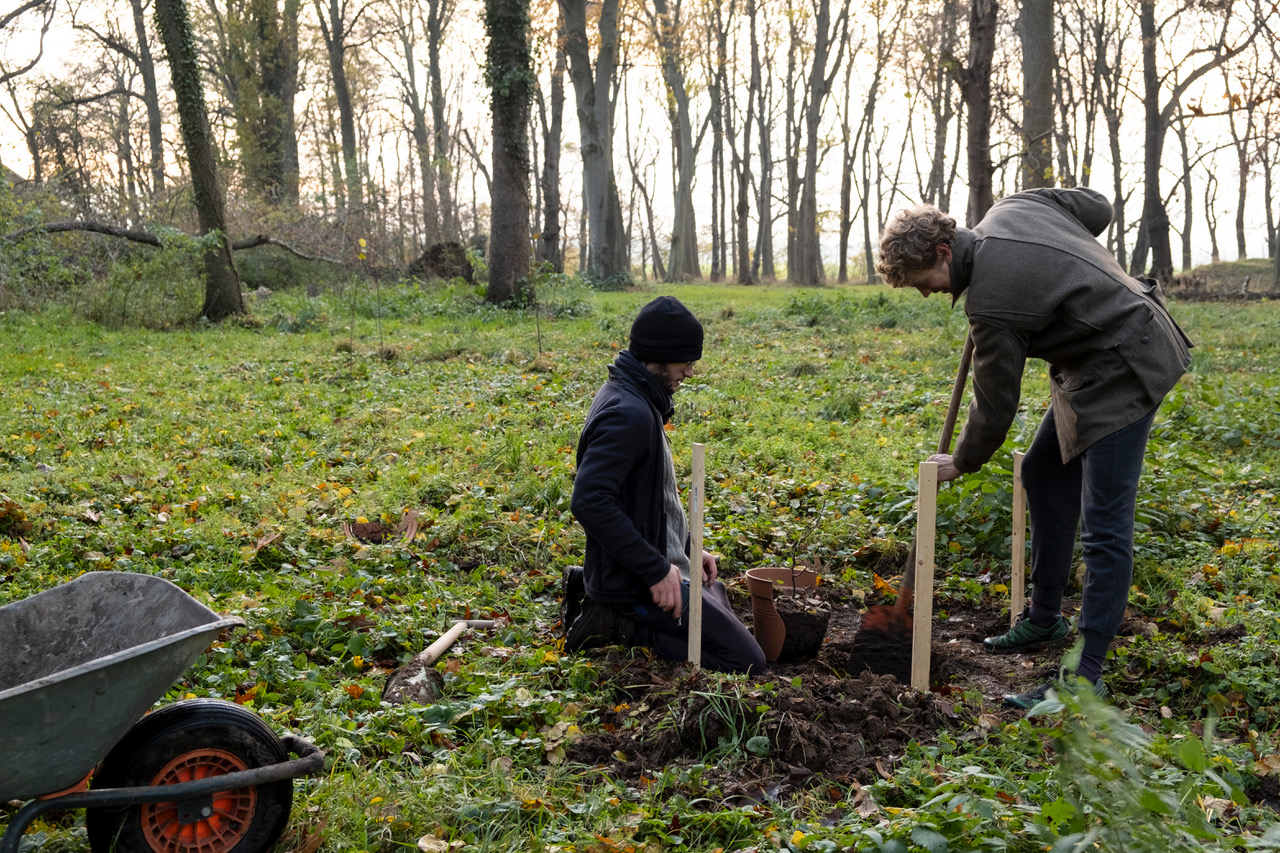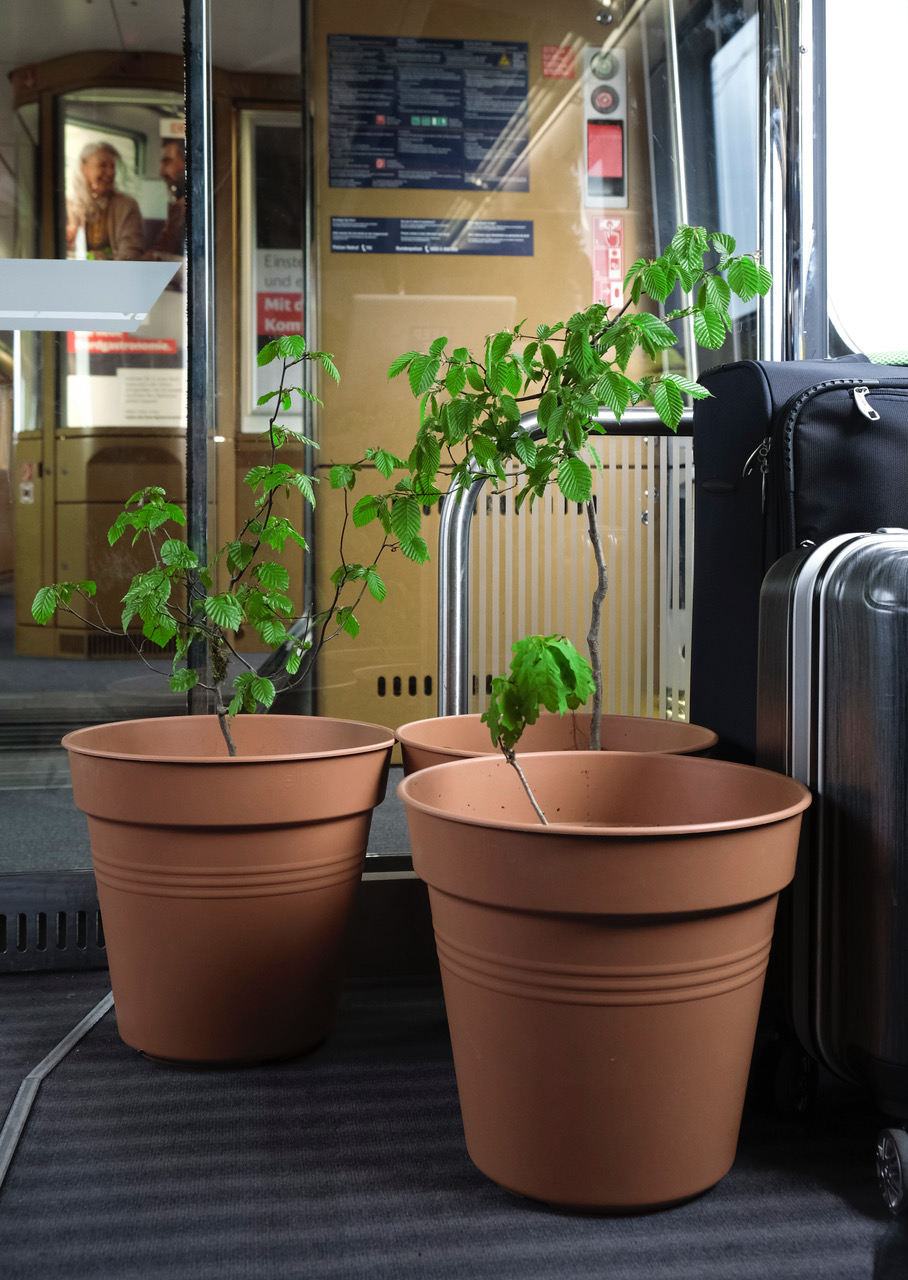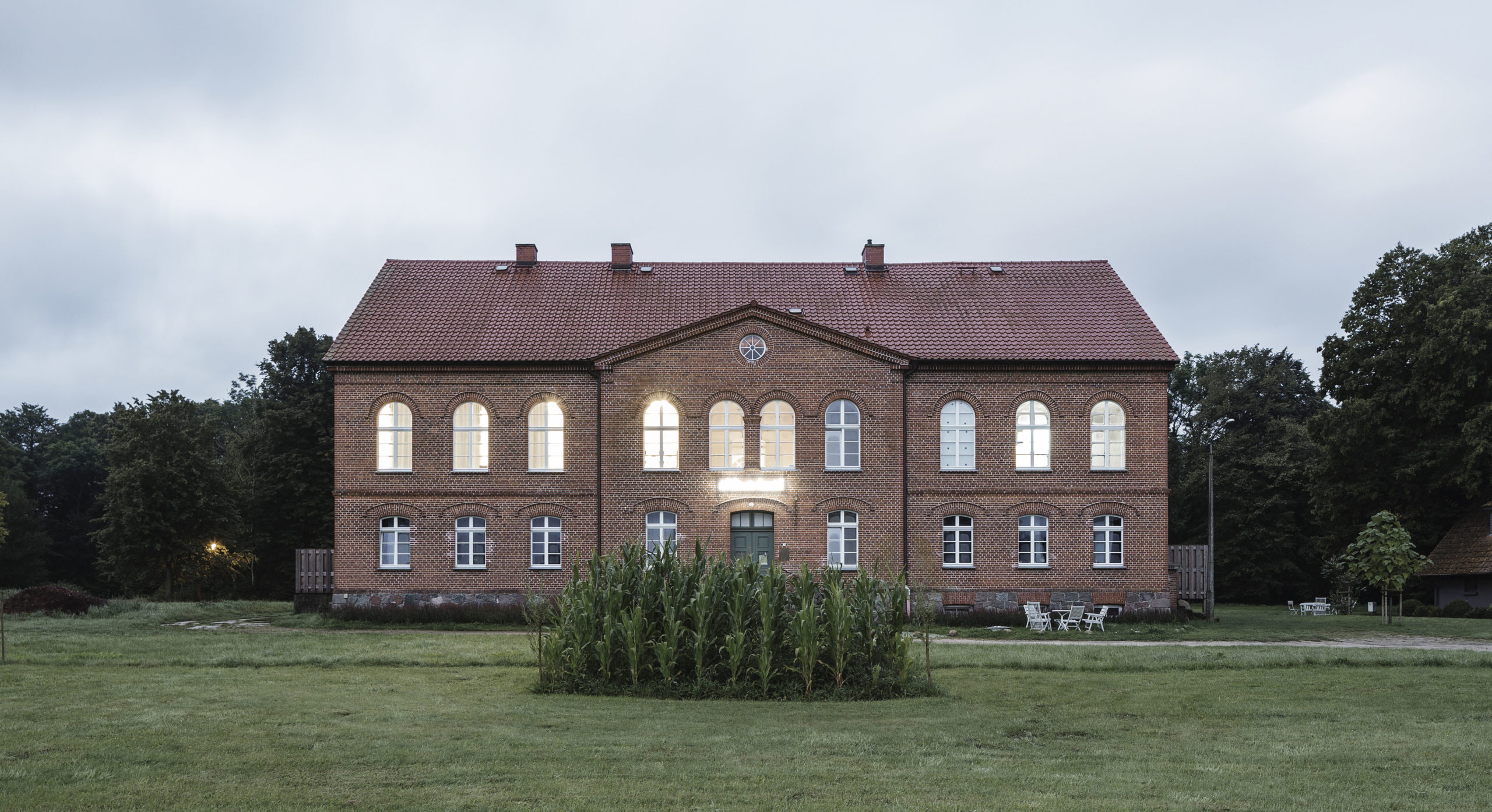Andreas Greiner & Paul Rohlfs
Vita
Andreas Greiner is a graduate of both the University of Fine Arts in Berlin and Olafur Eliassons’ Institute of Spatial Experiments. After studying medicine, anatomy, and sculpture he now focuses on time-based and digital artworks. His creative practice pushes the boundaries of classical parameters in sculpture. His more recent work however focuses on the anthropogenic influence on nature’s evolution and form. He is part of the artist collectives A / A and Das Numen.
Urs
2019 (in the collection)
Andreas Greiner’s residency at Kranich Museum has been engaged with the area surrounding the museum building itself, in particular the diversity and history of the trees in the park. His interest has been fueled by the events around the Hambacher Forest: one of the last remaining larger sections of a coherent forest that has been slowly taken over by the exploitation due to open-cast lignite mining. Sparked by the 2018 demonstrations against the destructions, and in a bid to rescue part of the remaining forest, Greiner together with the artist Paul Rohlf decided to extract some of the young hornbeams from the forest and nourish them until their perfect second habitat could be identified. This is how “Urs”, one of the young hornbeams has been planted on the grounds of Hessenburg in 2019.
While Urs is located in the park, the documentation of the project can be seen in the museum’s 1st floor, with a view on the growing tree. The three framed pieces each document the preparation steps of the final work. The first framed piece displays the research made on the soil samples from both the Hambacher Forest and from Hessenburg, which was crucial in determining whether the plantation of the tree can be successful. This is followed by the signed copy of the contract between the artist and the owner showcasing the terms and conditions of the artwork, while the last photograph shows Urs, right after its plantation in the park. The tree is expected to reach the height of 25-30 meters and will provide seeds that the artists aim to return and replant at the Hambacher Forest as a support of a new generation of trees.






